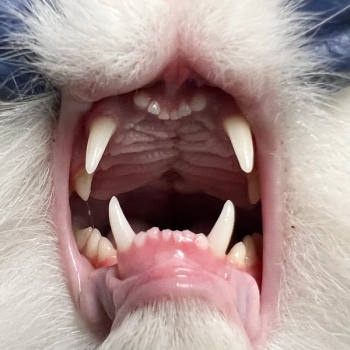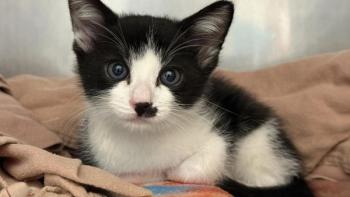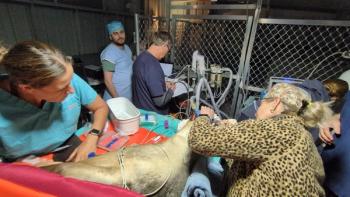
Managing distal limb injuries (Proceedings)
The distal limb is exposed to many traumatic events as a result of its almost constant interaction with the ground. The distal limb is defined as the anatomical structures from the carpus to the distal end of the front and rear limbs. In this area the skin has minimal muscle and fat under it for cushion.
The distal limb is exposed to many traumatic events as a result of its almost constant interaction with the ground. The distal limb is defined as the anatomical structures from the carpus to the distal end of the front and rear limbs. In this area the skin has minimal muscle and fat under it for cushion. This predisposes the skin of the distal limb to potential damage when it is compressed between the boney structures and a surface. When compared to the rest of the body, the distal limb has minimal excess skin and minimal skin surface area. This results in two problematic scenarios. When trying to close a skin deficit there is minimal skin available for expansion. There is also minimal expansion volume for the skin to stretch in injuries that result in tissue swelling. The paw pads play an important role in protecting the skin and underlying tissues from damage. Their protecting surface and the cushion underneath them allow for continual paw to surface interaction without skin trauma.
The most common type of wounds are defined as abrasions, incisions, lacerations and punctures. An abrasion is usually due to shearing between two compressive surfaces. An incision is created by a sharp object where the wound edges are smooth with minimal tissue trauma. A laceration is an irregular wound caused by tearing of the skin with variable damage to the tissue structures. A puncture is a result of penetration by a blunt or sharp object where there is minimal superficial damage and varying levels of damage underneath. Wounds are also classified according to their duration and contamination level. A class I wound is zero to six hours old with minimal contamination. A class II wound is six to twelve hours old with significant contamination. A class III wound is twelve hours old or more with gross contamination. The type of the wound, its contamination level and its duration defines how the wound will be managed.
The key to managing skin lesions of the distal limb is to minimize skin loss and minimize tissue swelling. When presented with an injury of the distal limb that involves heavy skin damage, it is important not to make a hasty decision that involves skin removal. A common treatment error is to address the wound at presentation by debriding tissue and then trying to close a wound while the paw is swollen. A better approach is to give the wound some time, which allows the clinician to better assess wound management. Once life-threatening concerns are addressed the limb can be cleaned and wrapped. Then manage the wound for 24 – 48 hours to determine what skin tissue is savable and what tissue will be lost. This management time will also allow for the swelling to subside.
In lesions where there is a skin deficit the clinician has two options for acquiring skin. One is to stretch skin near the lesion and the other is move skin from another region of the body. Stretching skin involves utilizing and manipulating surrounding skin to cover the deficit. It can involve one procedure or it can be done in stages. Relaxing incisions can be used to help close a lesion with minimal skin deficit. The specific procedure is selected according to skin availability surrounding the lesion. The procedures include a simple relaxing incision, V-Y Plasty, Z-Plasty and multiple punctate relaxing incisions.
Staged procedures can be as simple as placement of presutures or can be as complex as placing skin expanding devices under the adjacent skin. Presutures involve placing sutures over the deficit in healthy tissue on either side of the lesion for several hours (6-24 hours) to help stretch the surrounding skin. A common staged technique used to stretch the skin is the Adjustable Horizontal Mattress Suture. It is a continuous intradermal suture that is tightened periodically to gradually advance the wound edges closer together towards apposition. Presutures and the Adjustable Horizontal Mattress suture can be used on lesions that are not immediately closable but the clinician judges that the wound is closable without a skin graft or flap.
In large deficits of the distal limb sometimes a skin graft or flap is needed to provide a skin covering. Potential procedures include strip grafts, mesh grafts and axial pattern flaps. Grafting involves taking skin from an area of excess skin and transplanting it to the lesion at the distal limb. If the graft is prepared properly and the recipient site is immobilized correctly grafting techniques can be very successful. Axial pattern flaps are rarely used on the distal extremities.
Newsletter
From exam room tips to practice management insights, get trusted veterinary news delivered straight to your inbox—subscribe to dvm360.






